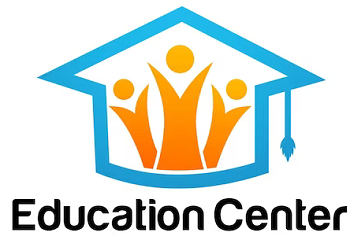If you’ve ever wondered why some assessments seem to produce deeper learning while others just capture short-term recall, you’re already circling the idea of authentic assessment. This approach centers on performance in meaningful, real-world contexts—asking students to apply what they know rather than simply recite it. It’s an area many advanced educator programs now emphasize. In fact, a Doctor of Education program will often make authentic assessment a core strand because it connects teaching, curriculum, and evidence of learning so directly.
What Is Authentic Assessment?
Authentic assessment is an approach that evaluates students’ ability to apply their knowledge and skills to real-world tasks or problems rather than simply recalling facts or reproducing information on an exam. Instead of a one-dimensional measure like a multiple-choice test, authentic assessment replicates the complexity of real-life scenarios, requiring learners to analyze, create, and perform in ways that mirror professional or civic responsibilities.
Examples of authentic assessment include:
- Nursing students are developing care plans for patient case studies.
- Business students creating and presenting a marketing proposal for a real or simulated client.
- Engineering students are prototyping a solution to a design challenge.
- Humanities students curating a digital exhibit or writing a public-facing policy brief.
In each case, learners are asked to perform tasks that mirror real contexts, building a bridge between theory and practice.
Five Hallmark Characteristics of Authentic Assessment
Educators and researchers agree that authentic assessments share several defining features. These characteristics ensure that assessments not only measure knowledge but also cultivate deeper learning and transferable skills.
-
Centers Realistic Contexts
Authentic assessments replicate or simulate real-life scenarios, such as presenting to a client, solving a case study, or designing a prototype. By situating learning in practical contexts, students see immediate relevance and purpose in their work.
-
States Clear Goals And Criteria
Students are provided with explicit outcomes and transparent rubrics that define success. This clarity empowers learners to take ownership of their work and ensures fairness in evaluation, while also aligning performance with professional standards.
-
Invites Collaboration
Many authentic tasks require students to work in teams, reflecting how real-world problems are solved collectively. Collaboration fosters communication, accountability, and interpersonal skills that extend well beyond the classroom.
-
Builds In Formative Cycles
Unlike one-shot exams, authentic assessments unfold across drafts, checkpoints, and revisions. This iterative structure turns assessment into a process of growth, giving students opportunities to learn from feedback and improve over time.
-
Requires Reflection And Feedback
Learners engage in self-assessment, peer review, and instructor feedback to deepen their understanding of both content and process. Reflection helps students internalize lessons learned and apply them in future contexts, solidifying long-term growth.
Why Use Authentic Assessment?
When asking ‘what are characteristics of authentic assessment tasks’, the answers reveal why this approach is so powerful: they are realistic, performance-based, and focused on applying knowledge to genuine problems.
Here are a few reasons why educators use authentic assessments:
1. Promotes Real-World Readiness
Authentic assessments prepare students for professional and civic life by replicating the kinds of challenges they will face after graduation. Whether it’s drafting a policy memo, designing a prototype, or diagnosing a case study, these tasks bridge the gap between theory and practice.
2. Encourages Engagement and Motivation
Because the tasks feel meaningful, students are more invested. They see the value in the work, not just for grades, but for its relevance to their future careers and communities.
3. Supports Higher-Order Thinking
Authentic assessment emphasizes skills like analyzing, evaluating, creating, and reflecting. These higher-order skills are more valuable than rote recall, equipping students with tools for lifelong learning.
4. Ensures Inclusivity and Equity
By allowing students to demonstrate mastery through varied formats—presentations, portfolios, performances—authentic assessment honors diverse strengths. This flexibility aligns with Universal Design for Learning (UDL), ensuring more equitable opportunities for success.
5. Strengthens Feedback and Reflection
Authentic tasks are often iterative, encouraging students to submit drafts, receive feedback, and revise their work. This process builds resilience, self-awareness, and the capacity to learn from critique—traits essential in real-world settings.
How to Build an Authentic Assessment Activity
For educators exploring how to design authentic assessments for real-world learning, the goal is to move beyond theory and create tasks that genuinely mirror professional or civic challenges.
Here is how you can do that:
-
Define Clear Learning Outcomes
Begin with the end in mind. Identify the knowledge, skills, and dispositions you want students to demonstrate. Outcomes should go beyond recall to include capabilities such as analyzing data, presenting arguments, or designing solutions for authentic audiences.
-
Design the Task Around Real Contexts
The heart of authentic assessment lies in crafting tasks that resemble real-life scenarios. For example, instead of writing a traditional essay, a student might be asked to develop a community awareness campaign, analyze a patient case study, or pitch a sustainable business model. The closer the task is to a real-world application, the more meaningful it becomes.
-
Develop Transparent Rubrics
Students must clearly understand what success looks like. Rubrics with well-defined criteria make expectations explicit, support fairness, and encourage self-assessment. Where possible, co-creating rubrics with students deepens their sense of ownership.
-
Build in Feedback Opportunities
Authentic assessments are rarely “one and done.” They work best when students can draft, receive feedback, and revise. Peer assessment, group discussions, and instructor feedback cycles all help students refine their work and learn from the process.
-
Scaffold with Support
Real-world tasks can be complex. Provide students with resources, exemplars, and checkpoints to build confidence. Scaffolded activities ensure that even ambitious projects remain achievable.
-
Use Technology Strategically
Technology can streamline authentic assessments, especially in large classes. Tools for peer review, group collaboration, and discussion can make the process smoother while giving instructors greater visibility into progress and performance.
Bottom Line
Authentic assessment is not a single assignment type; it’s evidence of learning. It’s also why so many educator-preparation and leadership programs teach it explicitly—capstone experiences in a Doctorate Degree in Education often ask candidates to design, implement, and evaluate authentic assessments in their own contexts, tying theory to measurable impact. If you’re getting started, choose one course outcome that truly matters, build a task that makes students use it for a real audience, and draft a rubric that tells them, in plain language, what good looks like.

